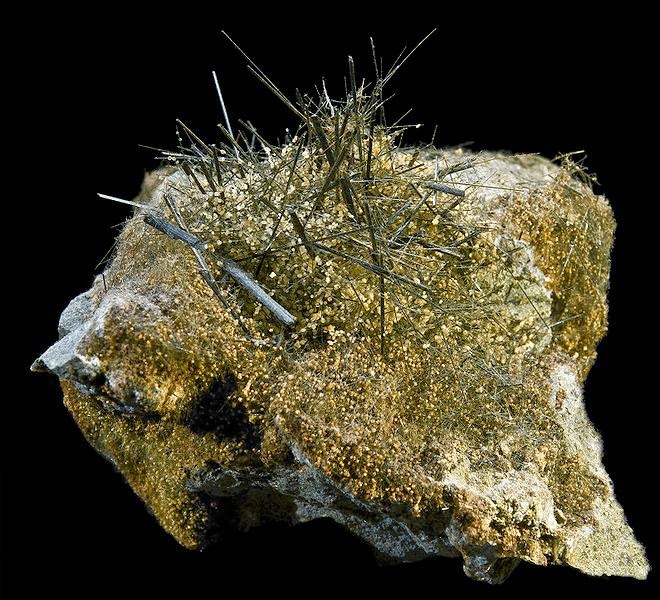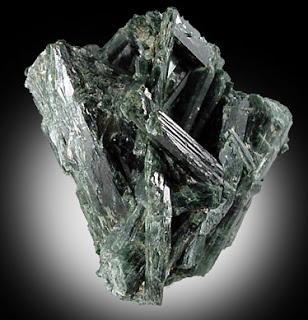
Chemical Formula: {Ca2}{(Mg,Fe2+)5}(Si8O22)(OH)2
Locality: Common world wide.
Name Origin: From the Greek, aktinos, meaning “ray” in allusion to actinolite’s fibrous nature.
Actinolite is an amphibole silicate mineral with the chemical formula ☐Ca2(Mg4.5-2.5Fe2+0.5-2.5)Si8O22(OH)2.
Mineralogy
Actinolite is an intermediate member in a solid-solution series between magnesium-rich tremolite, ☐Ca2(Mg5.0-4.5Fe2+0.0-0.5)Si8O22(OH)2, and iron-rich ferro-actinolite, ☐Ca2(Mg2.5-0.0Fe2+2.5-5.0)Si8O22(OH)2. Mg and Fe ions can be freely exchanged in the crystal structure. Like tremolite, asbestiform actinolite is regulated as asbestos.
Occurrence
Actinolite is commonly found in metamorphic rocks, such as contact aureoles surrounding cooled intrusive igneous rocks. It also occurs as a product of metamorphism of magnesium-rich limestones.
The old mineral name uralite is at times applied to an alteration product of primary pyroxene by a mixture composed largely of actinolite. The metamorphosed gabbro or diabase rock bodies, referred to as epidiorite, contain a considerable amount of this uralitic alteration.
Fibrous actinolite is one of the six recognised types of asbestos, the fibres being so small that they can enter the lungs and damage the alveoli. Actinolite asbestos was once mined along Jones Creek at Gundagai, Australia.
Physical Properties of Actinolite
Cleavage: {110} Perfect, {110} Perfect
Color: Green, Green black, Gray green, Black.
Density: 2.98 – 3.1, Average = 3.04
Diaphaneity: Translucent to transparent
Fracture: Splintery – Thin, elongated fractures produced by intersecting good cleavages or partings (e.g. hornblende).
Hardness: 5.5 – Knife Blade
Luminescence: Non-fluorescent.
Luster: Vitreous (Glassy)
Streak: white
Photo:











